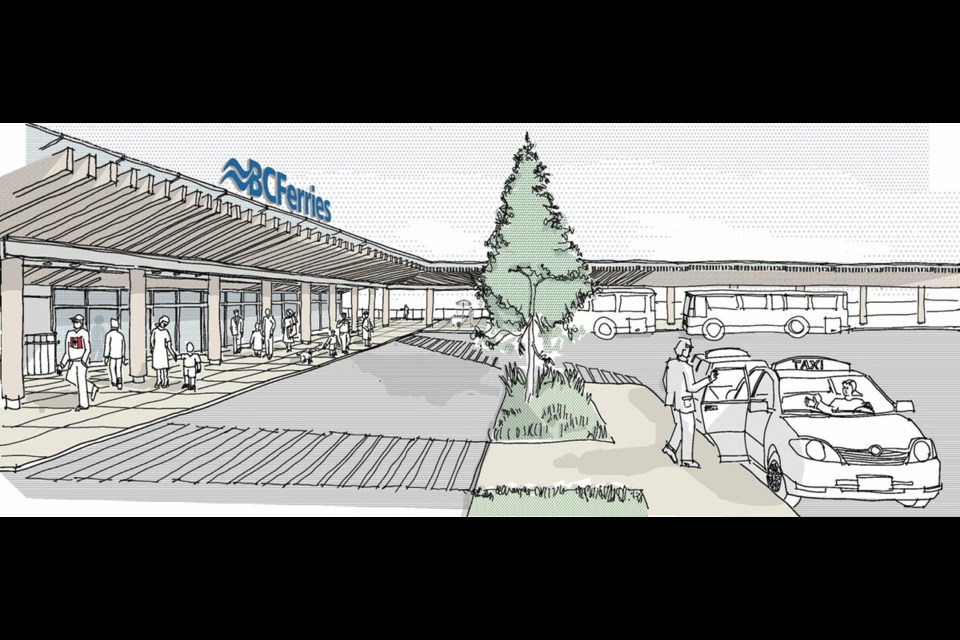B.C. Ferries has unveiled a vision of a renewed Swartz Bay ferry terminal that could include a waterfront boardwalk, a larger berth and a variety of improved amenities for both foot and vehicle passengers.
The Swartz Bay Terminal Development Plan, released Tuesday, outlines a phased-in approach to updating B.C. Ferries’ second-largest and second-busiest terminal. Tsawwassen is the largest, while Horseshoe Bay is the busiest in terms of sailings and vessel movements.
About 7.5 million passengers pass through Swartz Bay in a year.
The development plan, which looks out 25 years, is likely to break ground in 2021 with most of the major construction done over the following 10 years.
It is one of several projects earmarked in a $1.4-billion budget B.C. Ferries has in its capital plan to upgrade some of its 47 terminals.
The capital plan, the largest in B.C. Ferries’ history, outlines spending between 2019 and 2030 and will see the corporation spend $2.3 billion on vessels and $1.4 billion on terminals.
It is designed to take pressure off a system that has essentially remained unchanged in 30 years, and is being taxed by near-record passenger demand.
Mark Wilson, B.C. Ferries vice-president of strategy and community engagement, said there could be as many as six stages to Swartz Bay’s redevelopment.
The first phase will focus on improving road access, parking and the pickup and drop-off areas, serving as building blocks for future phases of construction.
Wilson said coming out of an extensive public engagement process, he felt B.C. Ferries and the travelling public appeared aligned in what they wanted to see in a redevelopment.
“What’s interesting is the public wants us to be future-proofed in a couple of areas,” he said, of the insistence B.C. Ferries take care of the environment in which it operates and ensures it is flexible enough to handle what’s coming next.
That means possible increased demand, shifts in transportation patterns as a result of ride hailing and increased use of public transit, technology changes and the possibility of having to accommodate passenger-only ferries.
Wilson said they’ve folded all of that into their thinking as they look ahead 25 years.
There were few details about what will be included in amenity packages on a redeveloped Swartz Bay site, but the plan does include routes for cyclists entering and leaving the terminal, a waterfront boardwalk and improved circulation for the pick-up and drop-off areas.
Wilson said there will be an improved and expanded foot-passenger waiting area with an expanded and significantly upgraded Land’s End food and shopping building in the vehicle-passenger waiting area.
He noted that amenities such as the Land’s End building are about keeping fares low, as money spent there “goes back into the fare box and a long way to keeping fares affordable. As long as there’s a return on investment on that, we are all for doing things like that to help our travelling customers.”
Those changes will likely come in the second and third phases of the project, and will be done after another round of consultation with the public to get a better idea of what amenities they want.
“We have a 25-year vision and I believe over time the plan will change, but we have a road map,” said Wilson.
He said the corporation hopes there will be only minor disruptions during construction — that’s why it has opted to do the project in phases.
B.C. Ferries employees will be at the terminal April 10 to 13 to share the plan with travellers.



